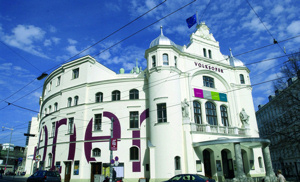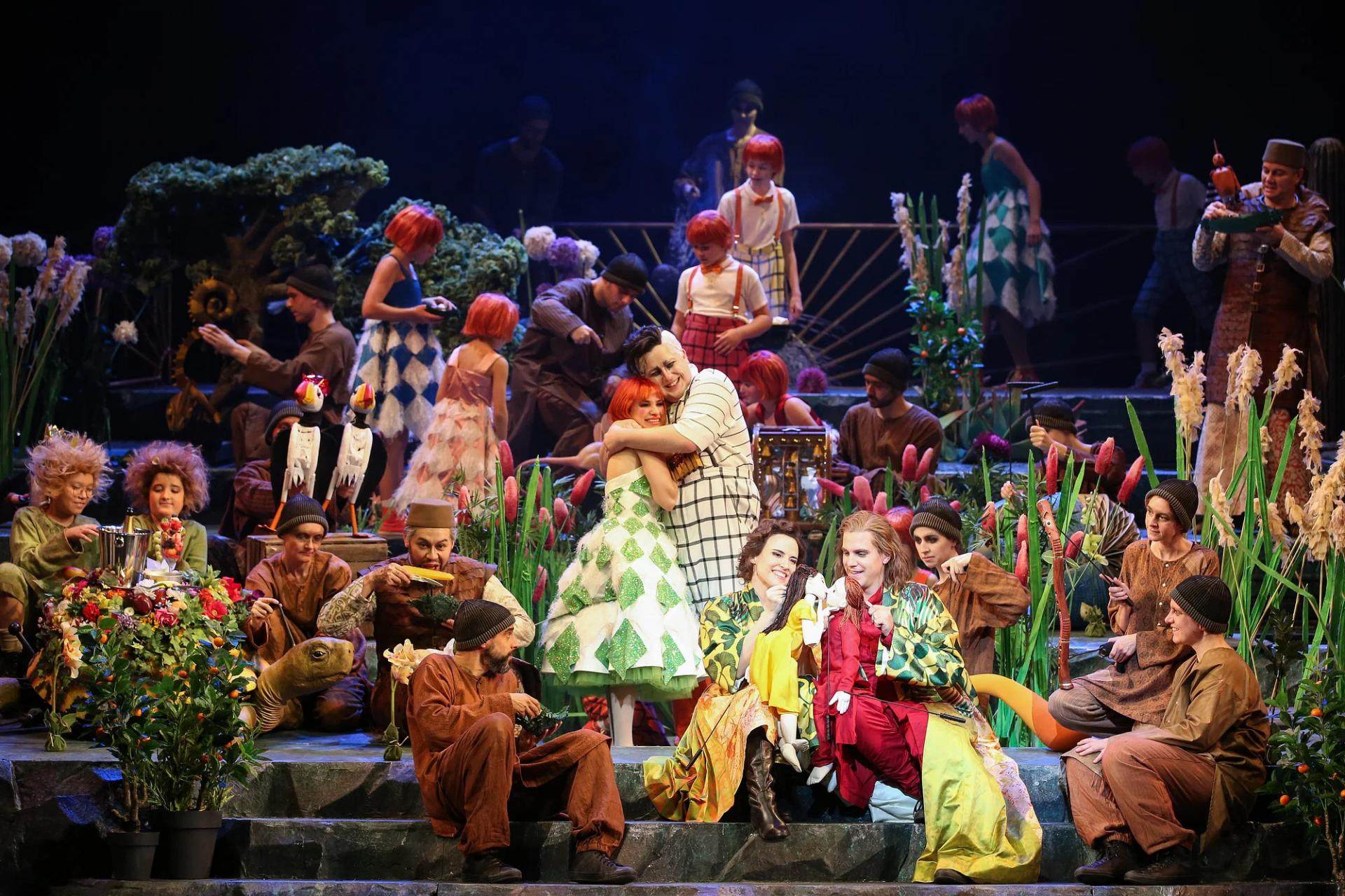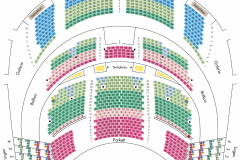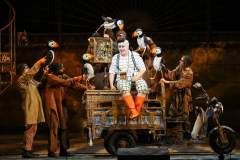The Magic Flute
Mo | Tu | We | Th | Fr | Sa | Su |
Opera by Wolfgang Amadeus Mozart. In German language with English surtitles.
Synopsis
Act One
The young prince Tamino is being pursued through an icy landscape by a perilous snake. He faints and is rescued in the nick of time by three belligerent ladies who slay the monster. As Tamino regains consciousness, he encounters the birdcatcher Papageno, who is in the service of the Queen of the Night, the ruler of this wasteland. The three ladies present Tamino with a likeness of Pamina, the Queen’s daughter who has been abducted by Sarastro. Tamino instantly falls in love with the likeness and promises the Queen that he will release her daughter from the hands of her mortal enemy. He sets forth on the journey together with Papageno. To aid them, Tamino receives a magic flute and Papageno a magic glockenspiel. In addition, three mysterious boys are entrusted to show them the way.
Papageno is sent ahead of Tamino and is first to reach Sarastro’s empire drenched in sun and heat, where he encounters Pamina. She is being hard-pressed by the sinister overseer Monostatos, but Papageno frightens him off and gains Pamina to his side. Meanwhile, the three boys have led Tamino to Sarastro’s temple, where a priest interrogates him about his mission. Guided by their enchanted instruments, all three adventurers try to find one another but get an abrupt surprise when Sarastro arrives. Pamina bravely takes on the feared ruler whilst Tamino is brought to Sarastro by Monostatos. The prince and princess recognise one another but are instantly separated, since Tamino and Papageno must undergo Sarastro’s trials.
Act Two
Sarastro wants to win Tamino over to his side and reveals to the priesthood that he has chosen Tamino for a higher purpose, and that Pamina is destined to be his wife. The trials commence with a commandment of silence, which proves especially challenging for Papageno. Though when the priests promise him a female companion who is his equal, he grumblingly agrees to apply himself to the task. Meanwhile, the Queen of the Night and her comrades-in-arms have invaded the temple. Remote controlled illusions of the three ladies ensnare Tamino and Papageno and attempt to win back their loyality to the Queen, whilst the latter instigates her daughter to an assassination attempt on Sarastro. However, Pamina‘s courage fails her and Monostatos tries to use her desperation to his advantage. But then Sarastro appears; he condemns all forms of deceit and vengeance, but is not free from his own ulterior motives.
Tamino and Papageno have further tough trials to face: an old woman appears to Papageno and wants to be his beloved, whilst Tamino’s resolute silence makes Pamina yearn for death. The prince’s steadfastness leads Sarastro to permit him to the final stage of his initiation, whilst Pamina now wants to bring her grief-stricken life to an end. Solely the three boys are able to save her from suicide and they lead her to her beloved. Together, Tamino and Pamina defy an apocalyptic vision of fire and water, violence and sorrow, and thereby pass all crucial trials.
The lonely, wandering Papageno continues to lose hope in finding the love he desires, but the three boys also come to his rescue and give him the vital clue he needs to find his longed-for Papagena. Monostatos has since switched his allegiance to the Queen and leads both her and her ladies to the heart of Sarastro’s sanctuary, but they are again overpowered. Both Sarastro and the Queen claim the truth for themselves till the bitter end – whether he wins or she loses. Their successors, however, are saved and, united, they look towards a self-determined future.
Recommended from 6 years
Program and cast
Stage direction: Henry Mason
Stage and costume design: Jan Meier
Puppendesign und Coaching: Rebekah Wild
Choreography: Francesc Abós
Lighting design: Guido Petzold
Choir director: Roger Díaz-Cajamarca
Volksoper Vienna
Public transport:
Underground line U6
Trams 40, 41, 42
Bus 40A
Stop "Währinger Straße / Volksoper"
A taxi stand is located at Währinger Gürtel.
Parking garages in WIFI and AKH
The Volksoper is Vienna’s main stage for operetta, opera, musicals and ballet, offering sophisticated musical entertainment. Colourful, eclectic and full of vitality, it is the only theatre dedicated to the genre of operetta.
Operetta belongs to Vienna and Vienna installed it at the home of operetta, Volksopera Vienna, which thereupon became the leading operetta house in the world. First class singers, actors and dancers together with a versatile orchestra cunjure up a musical firework display every evening.
Johann Strauss, Franz Lehár, Emmerich Kálmán wrote their world famous beloved melodies for operettas such as “The Fledermaus”, “The Merry Widow” and “The Csárdás Princess”. A visit to at least one of these operettas at the Volksopera Vienna is a must for every visitor to Vienna!
Also performed are operas from the 18th, 19th and 20th centuries, as well as classic musicals and ballet. In addition, the Volksoper has a fifth longstanding and proven speciality: it stages soirées, cabaret and burlesque performances under the name of “Volksoper Spezial”.
In the repertory theatre, which seats 1,337 persons, some 300 performances of around 35 different productions are staged every year between September and June.

 EN
EN DE
DE IT
IT FR
FR ES
ES RU
RU JP
JP RO
RO
 Seating plan
Seating plan 
